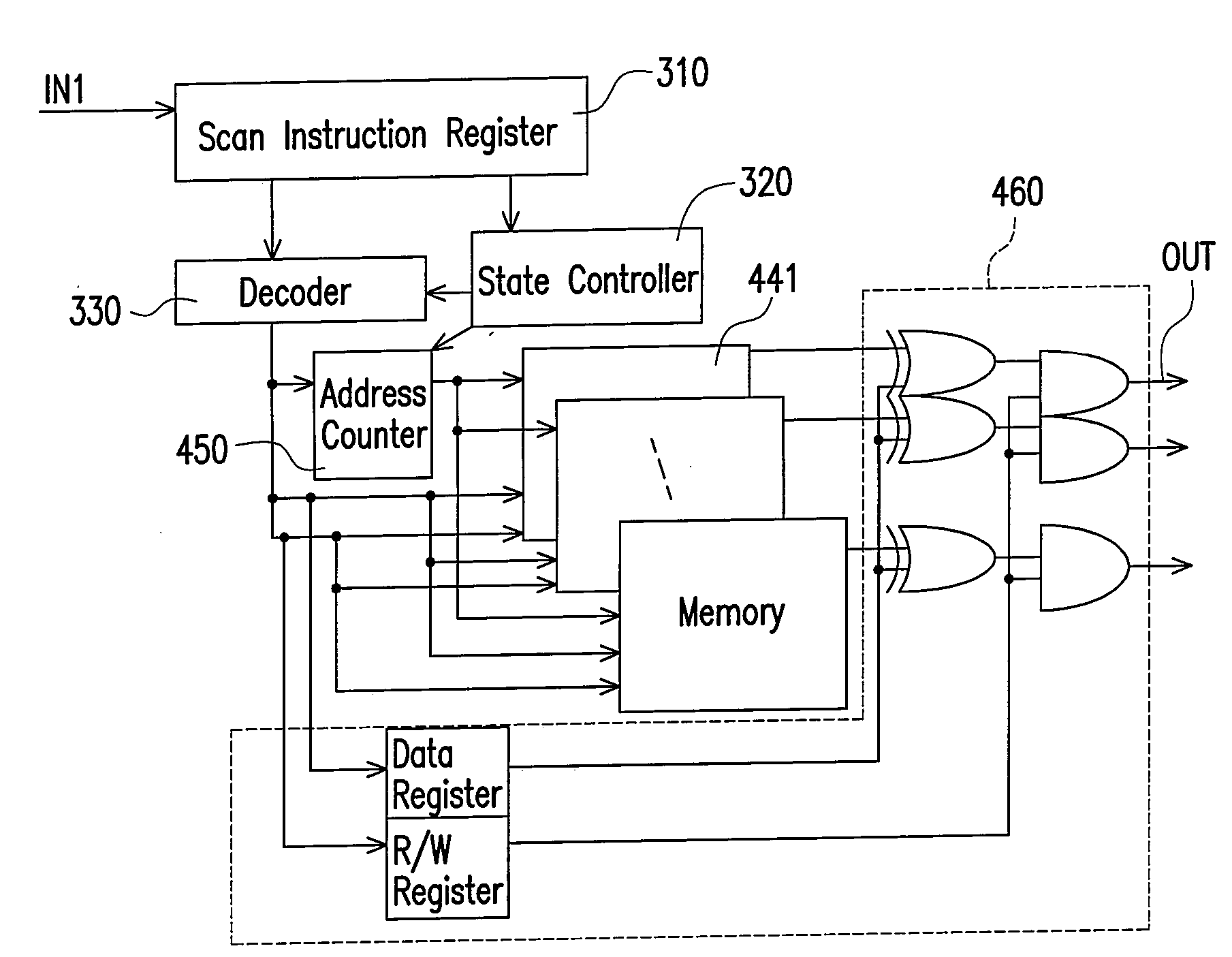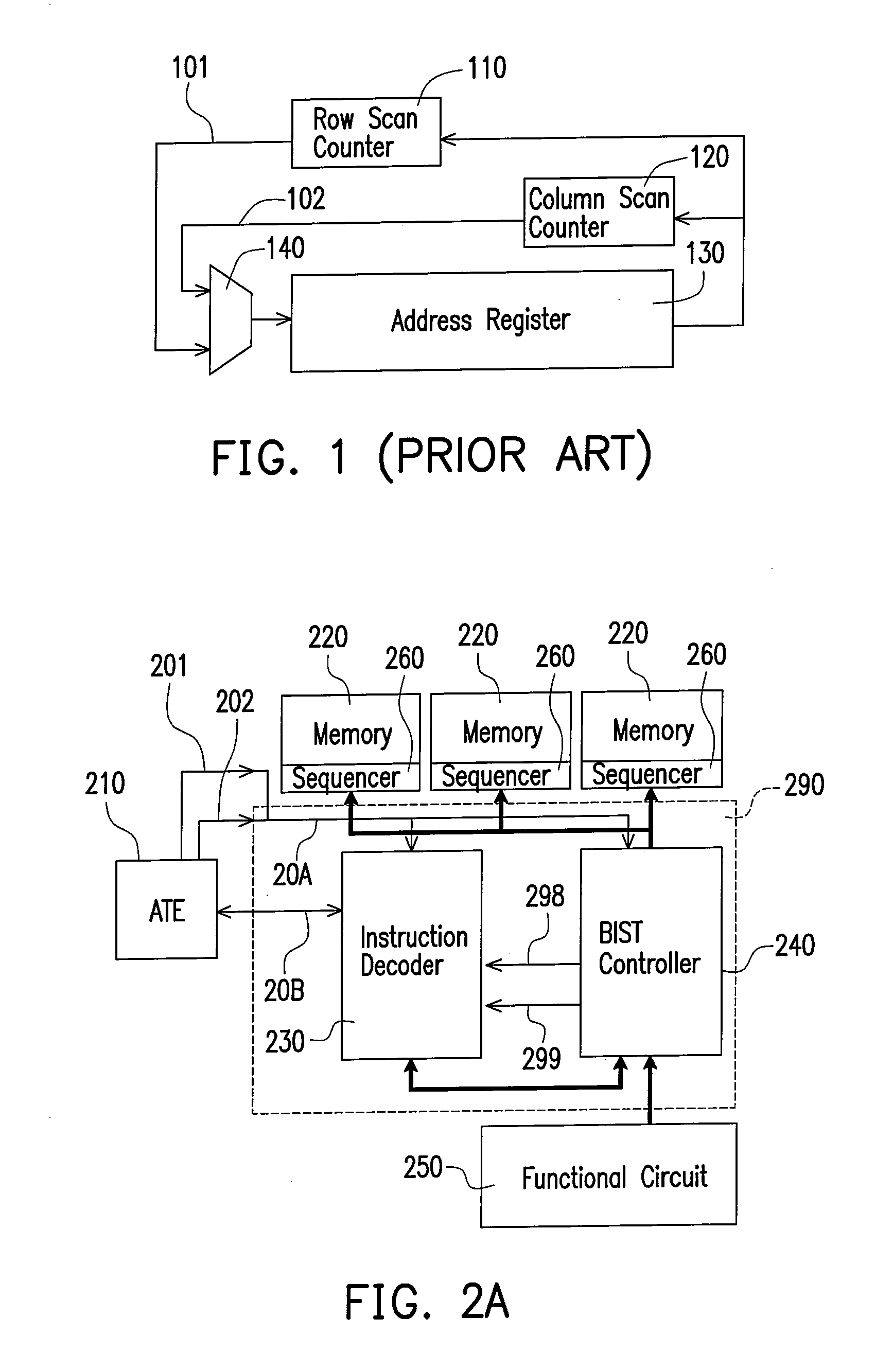Programmable memory built-in self-test circuit and clock switching circuit thereof
a built-in self-testing and clock switching technology, applied in the direction of detecting faulty computer hardware, error detection/correction, instruments, etc., can solve the problems of not being compact enough to satisfy the modern semiconductor industry for less circuit area and cheaper cost, and the above-mentioned built-in self-testing circuit is not compact enough to achieve the goal of eda software as well as the goal of achieving the goal, etc. , to achieve the effect of reducing
- Summary
- Abstract
- Description
- Claims
- Application Information
AI Technical Summary
Benefits of technology
Problems solved by technology
Method used
Image
Examples
Embodiment Construction
[0024]Reference will now be made in detail to the present preferred embodiments of the invention, examples of which are illustrated in the accompanying drawings. Wherever possible, the same reference numbers are used in the drawings and the description to refer to the same or like parts.
[0025]FIG. 2A is a memory built-in self-test circuit (MBIST circuit) according to an embodiment of the present invention, wherein an MBIST circuit 290, a plurality of memories under test (MUTs) 220, a plurality of sequencers 260 each of the MUTs 220 respectively belongs to, an auto-testing equipment (ATE) 210 connected to outside and a functional circuit 250 are illustrated. Each of the MUTs 220 and the corresponding sequencer 260 are respectively coupled with the MBIST circuit 290, the MBIST circuit 290 is coupled with the ATE 210 and the functional circuit 250 is coupled with the MBIST circuit 290.
[0026]Referring to FIG. 2A, the MBIST circuit 290 includes an instruction decoder 230 and a BIST contr...
PUM
 Login to View More
Login to View More Abstract
Description
Claims
Application Information
 Login to View More
Login to View More - R&D
- Intellectual Property
- Life Sciences
- Materials
- Tech Scout
- Unparalleled Data Quality
- Higher Quality Content
- 60% Fewer Hallucinations
Browse by: Latest US Patents, China's latest patents, Technical Efficacy Thesaurus, Application Domain, Technology Topic, Popular Technical Reports.
© 2025 PatSnap. All rights reserved.Legal|Privacy policy|Modern Slavery Act Transparency Statement|Sitemap|About US| Contact US: help@patsnap.com



